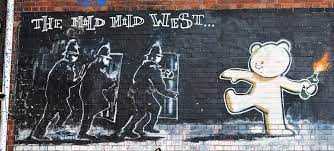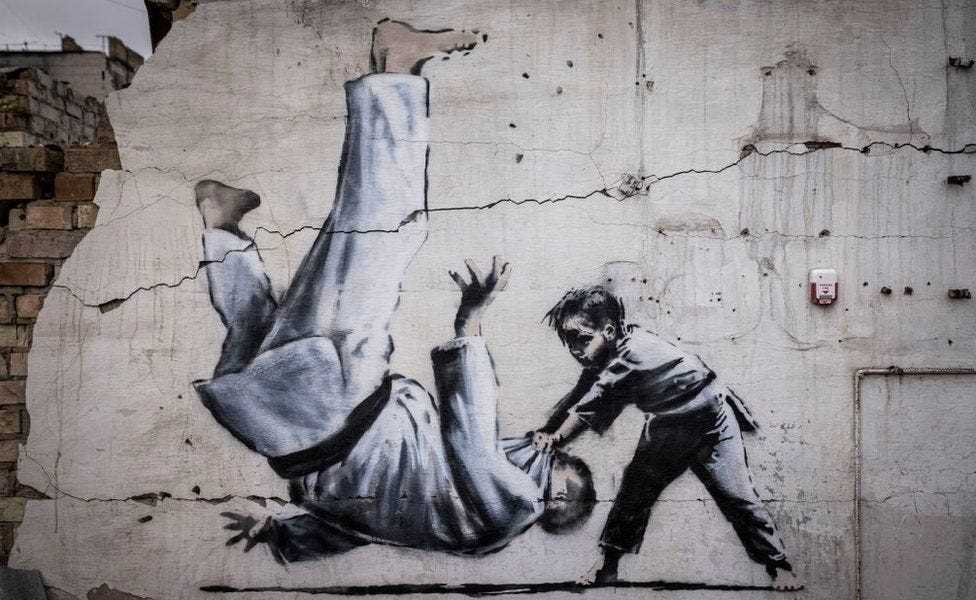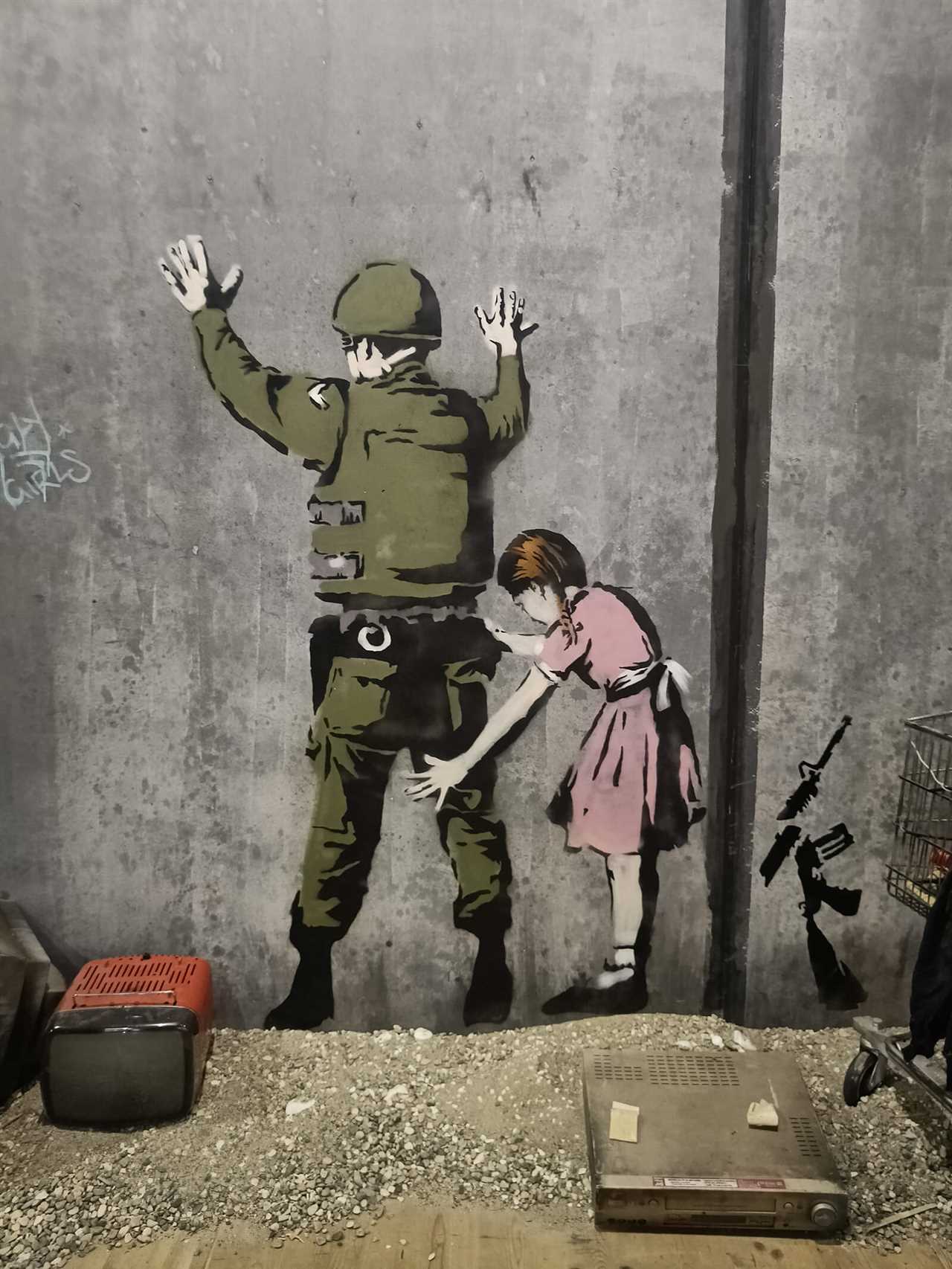
What sets Banksy apart from other street artists is his ability to seamlessly blend art with social commentary. His works can be found in public spaces across the globe, covering a wide range of topics such as capitalism, consumerism, war, and poverty. Banksy’s satirical and often humorous style draws viewers in, forcing them to confront uncomfortable truths about society.
Despite receiving critical acclaim and amassing a huge following, Banksy’s identity remains a mystery. This intentional anonymity adds an air of intrigue and rebellion to his work, amplifying its impact. Some argue that his anonymity allows him to freely express his opinions without fear of retribution, while others criticize him for hiding behind a mask and not taking responsibility for his actions.
The controversial nature of Banksy’s art has led to a myriad of reactions from the public and authorities alike. Some view his works as powerful statements that challenge the status quo and provoke important discussions, while others see them as acts of vandalism that deface public property. The question of whether Banksy’s art should be celebrated or condemned continues to divide opinions.

Banksy is an anonymous street artist and political activist who has become one of the most well-known names in the art world. His true identity remains a mystery, adding to the intrigue and mystique surrounding his work.
Early Life

Very little is known about Banksy’s personal life or background. It is believed that he was born in Bristol, England, but there is no confirmed information about his birth name or date.
Artistic Style and Themes

Banksy’s art is characterized by its distinctive stencil technique and satirical or politically charged subject matter. His works often incorporate biting social commentary and address issues such as war, capitalism, poverty, and government surveillance.
Banksy’s art can be seen on walls, bridges, and public spaces all over the world. He often creates his pieces illegally, using the cover of night and masks to evade authorities. His artwork has been featured in galleries and museums, but he continues to primarily work in public spaces.
Despite his elusive nature, Banksy’s art has gained international recognition and his pieces have sold for millions of dollars at auction. His work continues to provoke thought, challenge societal norms, and inspire a new generation of artists.
Controversial Works

Banksy is known for his bold and thought-provoking artworks that often touch upon controversial subjects. Here are some of his most controversial works:
1. Dismaland

Dismaland was an art exhibition created by Banksy in 2015. It was a temporary installation set up in an abandoned amusement park in Weston-super-Mare, England. The exhibition featured a dystopian theme, with artworks that critiqued capitalism, consumerism, and social issues. One of the most controversial pieces was a sculpture of Cinderella’s carriage overturned in a grim accident scene.
2. Slave Labour

In 2012, Banksy created a mural titled “Slave Labour” on the side of a shop in London. The artwork depicted a young boy hunched over a sewing machine and sewing Union Jack bunting. It was later discovered that the mural was taken from its original location and put up for auction in Miami. Many saw this act as a form of exploitation, as the artwork was created as a comment on child labor.
These are just a few examples of Banksy’s controversial works. His art often challenges societal norms and raises important questions about power, inequality, and the state of the world we live in.
The Impact of Banksy’s Street Art

Banksy’s street art has had a profound impact on the art world and society as a whole. Through his thought-provoking and often controversial works, he has managed to challenge societal norms, bring attention to important social and political issues, and inspire a new generation of artists.
1. Challenging societal norms

Banksy’s art often challenges the existing norms and structures of society, pushing boundaries and forcing viewers to question their surroundings. His work encourages people to think critically and challenge the status quo.
2. Bringing attention to social and political issues

Banksy’s street art often tackles important social and political issues, such as poverty, inequality, war, and environmental degradation. Through his art, he brings these issues to the forefront and sparks conversations and debates among viewers.
His iconic images, such as the girl with the balloon or the riot police with smiley faces, have become symbols of these issues and have been reproduced and shared globally, amplifying their impact and raising awareness.
3. Inspiring a new generation of artists

Banksy’s art has inspired countless artists around the world to take to the streets and use art as a means of expression and activism. His simple yet powerful approach has shown that art can be a powerful tool for change and has inspired many to use their creativity to make a difference.
His anonymity has also fueled intrigue and mystery, further adding to his appeal and inspiring others to use art as a means of challenging the establishment and making their voices heard.

I am a mural enthusiast and a fervent admirer of street art. Rather than creating murals myself, I am passionate about collecting them. My love for street art knows no bounds. I am dedicated to curating and cherishing these artworks that grace the streets. My collection stands as a testament to my profound appreciation for this form of artistic expression.
read about me



